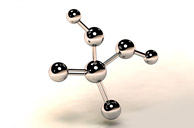
Mathematical models are central in systems biology and provide new ways to understand the function of biological systems, helping in the generation of novel and testable hypotheses, and supporting a rational framework for possible ways of intervention, like in e.g. genetic engineering for improved industrial biotechnological production, drug development or treatment of diseases. Since the amount and quality of experimental omics data continue to increase rapidly, there is great need of methods for proper model building and analysis which can handle this complexity.
In this project, we will focus on multi-scale modelling of biological systems, i.e. models which include different scales, from micro (e.g. models of metabolic networks) to macro (e.g. bioprocess models used in the context of the Process Analytical Technology (PAT) for screening, statistical monitoring and control). The project aims to tackle with the optimization of metabolites production by developing and applying new methods and tools for building, analyzing and applying multi-scale models under the realistic scenario of having uncertain data, typically either scarce highly informative or abundant yet low informative data. To this end, the scale ranging from the microorganism metabolic level up to the macroscopic bioreaction level will be considered for developing methods and tools both for strain optimization and for industrial bioprocess production, monitoring and optimization. focusing on the following research pillars:
- (I) Model building methods and tools, including identifiability analysis, parameter estimation (model calibration), uncertainty modelling and optimal experimental design, analysis of how to connect bottom-up with top-down approaches, data-driven knowledge versus model-driven one, and compatibility among models at different abstraction levels.
- (II) Model analysis methods and tools, including global sensitivity analysis, bifurcation analysis, dynamic flux balance analysis, elementary flux mode analysis, and model reduction techniques.
- (III) Application to biotechnological industrial production, with special emphasis on how low level biological information obtained in the previous pillars can provide valuable information at the bioreactor level. In this point, it will be a principal concern how to integrate data from all scales into the PAT framework promoted by the Food and Drug Administration (FDA) in USA, namely in statistical monitoring and control actions.
The project will focus on the following main research sub-goals:
-
- Develop new methods and tools for building multi-scale models for bioprocesses.These methods should help to build models with the degree of detail and precision appropriate for a given purpose under a common framework. Within the scope of the project, multi-scale models will be understood as those in which either (i) multiple time scales can be defined (thus yielding DAE models) (ii) compatibility between two adjacent abstraction levels is required and/or (iii) parameters in one model are in turn obtained from a lower-level submodel. Considered aspects will include model building methods and tools, including identifiability analysis, parameter estimation, uncertainty modelling and optimal experimental design, analysis of how to connect bottom-up with top-down approaches, data-driven knowledge versus model-driven one, and compatibility among models at different abstraction levels.
- Develop new methods and tools for the analysis of multi-scale models.These tools will be used for: Simulation- based analysis, i.e. generate experimentally testable hypotheses on underlying mechanisms as well as predictions of cellular behaviour, study of systemic properties, and understanding of qualitative features, even if the model is not precise enough to provide acceptable quantitative predictions. Considered aspects will include model analysis methods and tools, including global sensitivity analysis, bifurcation analysis, dynamic flux balance analysis, elementary flux mode analysis, and model reduction techniques.
- Application to biotechnological industrial production in the PAT context. Strain and production management optimization, with special emphasis on how low level biological information obtained in the previous points can provide valuable information at the bioreactor level. It will be a principal concern how to integrate data from all scales into the PAT framework promoted by the FDA, namely in statistical monitoring, and control actions.
- Validation on two model microorganisms. Validation of the different proposal and techniques developed in this research project will be done using two different micro-organisms widely used in industry as inducible systems to produce enzymes and/or high-added values specialty metabolites: the eukaryotic yeast Pichia pastoris, and the bacteria Escherichia coli. Besides their industrial interest, they are biologically well known, and a large amount of data and bibliography exists in both public and private databases.
|




